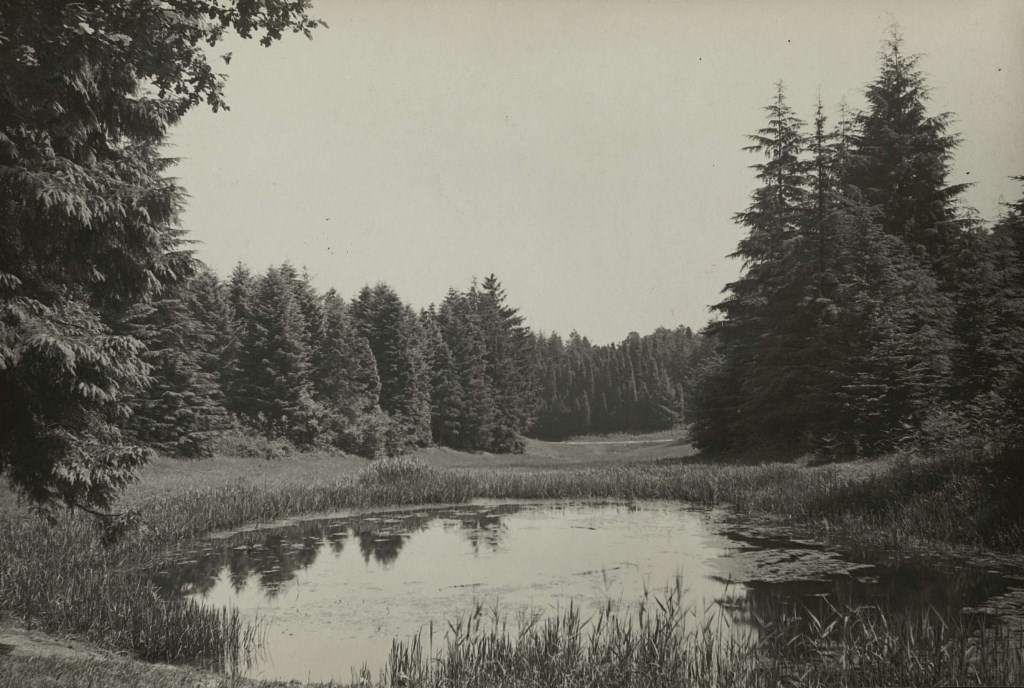Brief History
The Capuchin Wood, encompassed by the larger Sonian Forest, owes its name to the capuchin monastery which was founded here in 1626 under the aegis of Isabella of Spain, Governor of the Spanish Netherlands. A few acres of land were cleared of trees to make way for the monastery. This monastery, by the way, was situated on the plateau near the Achtster (literally ‘star with eight rays’), the square road pattern with the crossing of forest lanes in the middle, that still exists in the south-east of the domain. The Capuchin monastery was short-lived and was swiftly demolished by the French revolutionary government in 1798. The grounds of the monastery and the nearby dried out pond were immediately reforested.
King Leopold I eventually separated the Capuchin Forest from the rest of the Sonian Forest when he purchased the domain in 1848. It was at this time that the Belgian government took over the main part of the Sonian Forest from the Société générale de Belgique, a powerful investment bank and holding company that had taken over the ownership of the forest from the hands of King William I of the Netherlands.
Leopold I exploited the Capuchin Wood for its timber and cut down most of the tree stands and, for a few decades, set aside major parts of it for agricultural use by a number of local tenants. Leopold’s successor and heir, Leopold II, began a gradual reforestation of the domain in the 1880s-90s. He didn’t favor the elsewhere ubiquitous Common beech, but planted instead Pedunculate oak on the loamy soils, and Scots pine and Norway spruce on the poorer sandy soils. The latter species were replaced for the most part in the 1940s-50s with fast-growing exotics, including Douglas-fir, hemlock, black pine and larch.
The managers of the domain were already familiar with these foreign tree species, because from 1902 and onwards a forest arboretum had begun to take shape within the bounds of the still young oak forest. This arboretum was laid out according to an ambitious plan designed by Prof. Charles Bommer, a Belgian forestry specialist. Forest arboreta were not a novelty at the time. Experimental plantations were established throughout Europe in order to evaluate the usability of exotic tree species in afforestation projects. What set the arboretum in Tervuren apart, however, was the scale of the project and the ambition of its managers to reproduce different forest types from around the world. The tree species in Tervuren were planted according to their region of origin, and done so in a way to more or less reflect the characteristics of their natural habitats. The project did not take long to take shape: By 1912, according to an inventory drawn up by the forest brigadier Janssens, the existing 40 arboretum groups (with the same number of regions of origin) had already been planted.
Prof. Bommer remained involved with the arboretum until his death in 1938. He worked closely with the directors of the domain on the care and appearance of the arboretum, which soon enjoyed an international reputation. From the 1950s onwards, director U. Liénard took the helm with no less enthusiasm and diligence, and so the arboretum was constantly rejuvenated and enriched.
A new focus in forest management has come to the fore since the 1990s, especially in public forests. The ecological importance of the forest is emphasized, and the aims have shifted towards natural management methods and ecosystems services instead of wood production. It is now recognized that these forests play a part in species conservation, water management, air purification, CO2 capture and storage, recreation, and public health. This shift, by the way, is reflected in the 1996 forest management plan for the Capuchin Wood, and even more so in the 2014 cluster management plan for the Sonian Forest in the Flemish Region, which is strongly focused on the conservation and improvement of European habitats that exist within these forests.
The Arboretum of Tervuren obviously played a modest role in this ecological story, and might have been a bit neglected for a couple of decades in that context. But the arboretum’s unique historical, patrimonial and educational value, as well as the original design of its landscape, with its logically and beautifully structured collections, is now beyond dispute. Starting in 2006, a revaluation project was carried out for the preservation and renewal of the arboretum. The collection was inventoried and documented. Tree stands that were too dense were thinned to allow new growth of the best specimens. Misplaced or newly-grown trees that did not fit into the forest type or geographical group were cleared. The nursery attached to the domain was reactivated to begin work anew. Young trees were planted in the degraded and open spaces within the collection. New footpaths were laid out and signage was placed in order to improve public access and guidance.




